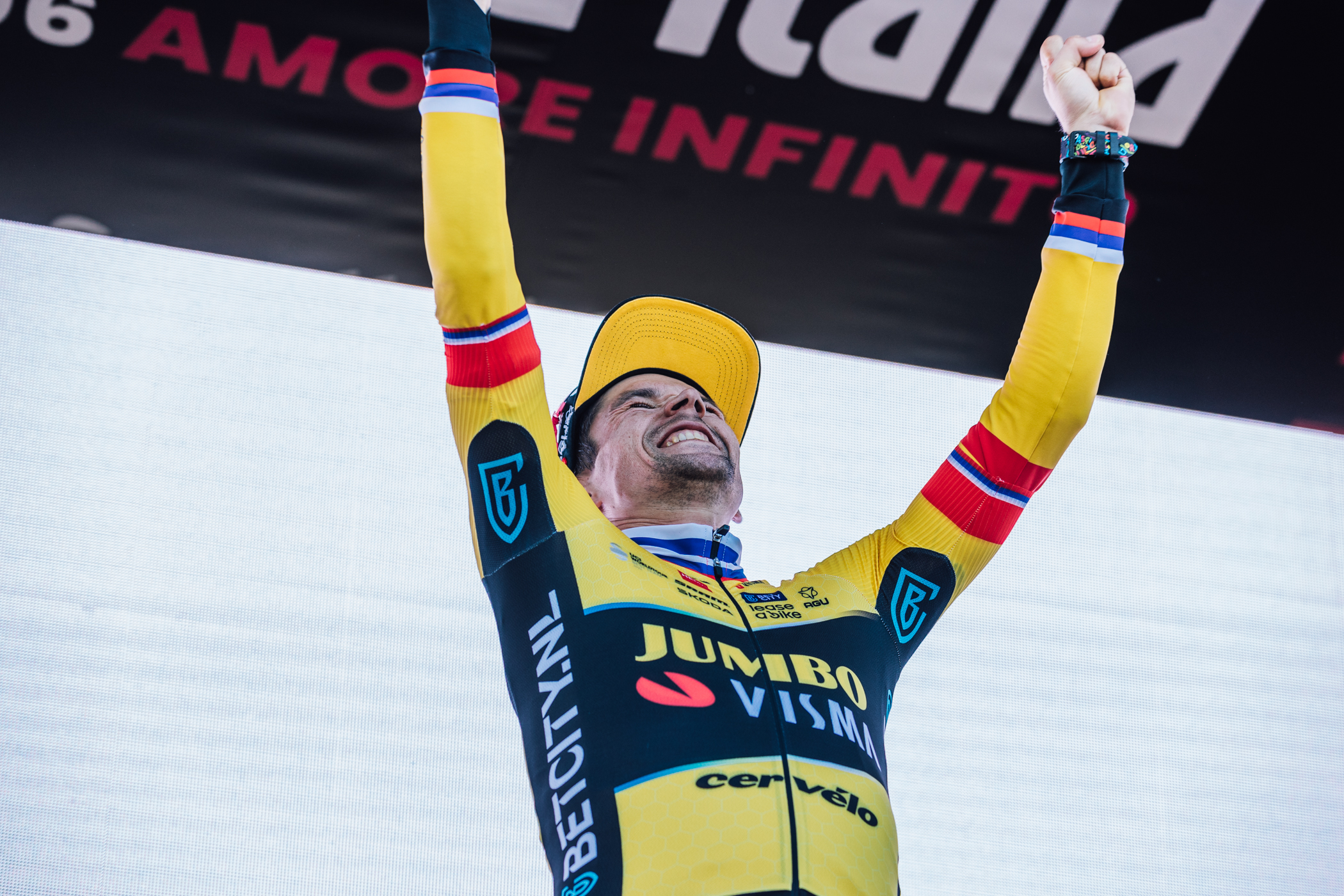
The Giro d'Italia is never boring. Caution may have been the byword for the general classification contenders before the final week, but, as ever, the corsa rosa threw up a thousand subplots on its way from Pescara to Rome.
The race set out with Remco Evenepoel as its favourite and ended with redemption for Primož Roglič. In between, a wide cast of characters played leading roles. Derek Gee, Eddie Dunbar and Andreas Leknessund were revelations. Thibaut Pinot's stylish refusal to surrender illuminated the mountains, while his teammate Bruno Armirail's cameo in pink gave the Groupama-FDJ domestique some unexpected time in the sun.
Geraint Thomas lost the race on the final weekend, but he won admirers with his magnanimity in defeat. Jonathan Milan enjoyed a break-out stage win and the maglia ciclamino, while Ben Healy claimed a most notable solo victory in Fossombrone.
In its final days, of course, the race became a contest between Roglič, Thomas and João Almeida for the final maglia rosa, with the Slovenian emerging victorious. Cyclingnews takes a look back at some of the defining moments of his victory.
Related - The epic battle for the 2023 Giro d'Italia: Stunning images of the final weekend
Remco Evenepoel catches COVID-19
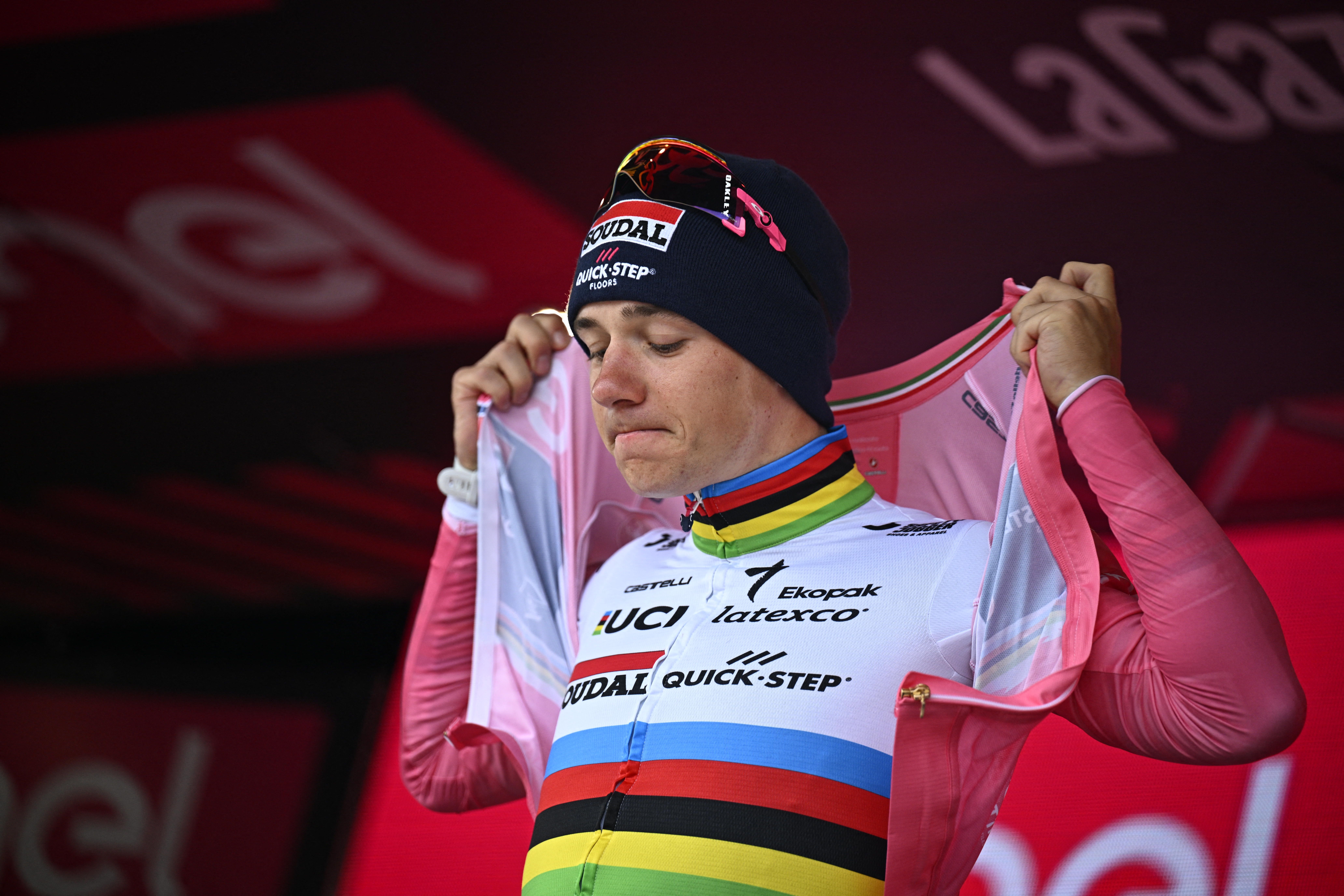
It had just gone 10.30 p.m. on the eve of the first rest day when the press release landed: "Remco Evenepoel out of Giro d'Italia due to COVID-19." For only the third time in history, a rider had left the Giro while wearing the pink jersey. Just like that, the complexion of this race had changed utterly.
The Giro had been trumpeted beforehand as a duel between Evenepoel (Soudal-QuickStep) and Primož Roglič (Jumbo-Visma), but it looked set to be a solo exhibition after the opening time trial in Ortona, where the Belgian claimed the first maglia rosa, putting more than two seconds per kilometre into his rival in the process. When Evenepoel farmed out the pink jersey to Andreas Leknessund (Team DSM) at Lago Laceno, it was already clear that it was a short-term loan.
Evenepoel duly took the jersey back on the second weekend, but the margins were tighter than anyone anticipated. The world champion surprisingly conceded a handful of seconds on the punchy finale at Fossombrone on stage 8 and he only just pipped Geraint Thomas (Ineos Grenadiers) in the time trial in Cesena the following day. Although Evenepoel's overall lead stood at 45 seconds that evening, his aura of invulnerability had dispersed.
In the post-stage press conference, Evenepoel hinted at the underlying explanation, revealing he had been suffering from a blocked nose. "Let's touch wood that it's not a virus," he said. "I don't want to say the [name of the] virus, that would not be good luck."
Within hours, his fears were confirmed. Soudal-QuickStep's failure to notify RCS Sport directly before announcing the departure drew understandable criticism but grumbles that Evenepoel had somehow failed to 'honour' the race completely missed the point.
Given that COVID-19 testing is no longer mandatory at Grand Tours, Evenepoel would have been within his rights to remain in the Giro even after his positive test. If anything, his team's decision to safeguard his health and withdraw him immediately deserved praise rather than censure.
Even after his departure, Evenepoel continued to dominate headlines deep into the second week. In his absence, however, a very different kind of race was developing.
Tao Geoghegan Hart crashes out
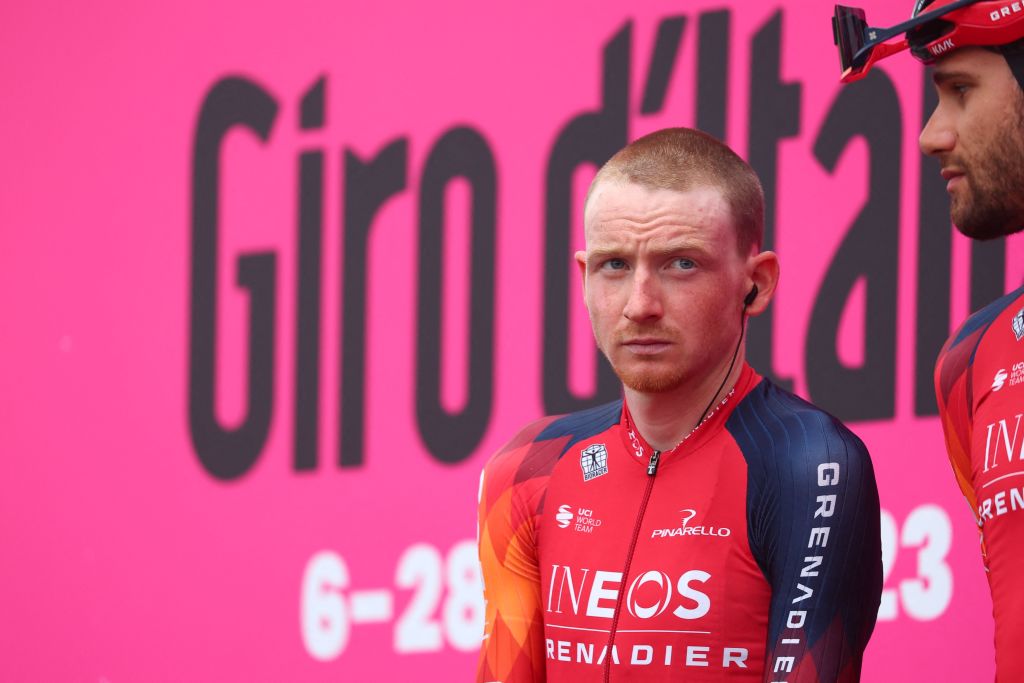
When Evenepoel left the race, the Giro looked set to become an asymmetric duel between Roglič and the Ineos Grenadiers duo of Geraint Thomas and Tao Geoghegan Hart. Thomas carried the maglia rosa into the second week after Evenepoel's withdrawal, but the margins were wafer thin. Roglič trailed by two seconds, with Geoghegan Hart just five behind.
At that point, it was difficult to tell who had the upper hand in that contest. When Roglič had unleashed a stinging attack on I Cappuccini on stage 8, after all, Thomas and Geoghegan Hart had managed to bridge up to him over the top by pacing the climb smartly. "We both had the same idea," Thomas said approvingly.
It was also difficult to tell who was the stronger of the Ineos tandem. Thomas' experience, consistency and sheer cussedness meant that he offered certain guarantees over three weeks, and those qualities would eventually carry him to within touching distance of final overall victory.
Geoghegan Hart had the experience too – he won this race in 2020, after all – but above all, he had the form, as his victory at the Tour of the Alps had testified. The Londoner proceeded to make a fast start to the Giro, delivering arguably the best time trialling display of his career on the opening day in Ortona, while his sharp showing at Fossombrone suggested he would not be cowed by Roglič, Evenepoel et al. Matteo Tosatto, the man who guided him to Giro victory in 2020, believed he had progressed considerably since then: "He has more confidence in what he can do."
And then, in an instant, it was all over. The three most likely winners of the Giro, Roglič, Thomas and Geoghegan Hart, all came down in the same crash on the descent of the Colla di Boasi on stage 11. Thomas and Roglič remounted and re-joined the peloton. The unfortunate Geoghegan Hart left the Giro in an ambulance after breaking his hip. Cruelly, the elimination race had claimed another victim. Roglič's odds in his joust against Ineos, meanwhile, had suddenly improved.
The conditions and the route dissuade attackers

Bora-Hansgrohe directeur sportif Enrico Gasparotto called it accurately from the very first days of this Giro. The race, he suggested, would be one of elimination – "a survival game," to use his words – and television audiences might not necessarily be enthralled by the action until the mountainous final week.
So it proved, with persistent rain and low temperatures serving only to condition the race still further and dissuade attacks from the GC men. The miserable weather had already played a notable part in the drama of stage 5, where Evenepoel and Roglič were among the fallers on the sodden road to Salerno, but the conditions truly began to bite in week two.
Ahead of stage 10 to Viareggio, there were already talks of cutting the Passo delle Radici from the route due to the cold and heavy rain, but the race eventually went ahead as planned. The deluge that day hardly helped the morale or health of a peloton already whittled down by a series of COVID-19 cases.
By week's end, the conditions had taken a further toll, and a combination of pre-existing disgruntlement and grim forecasts led to the shortening of stage 13 to Crans Montana. The riders, through the CPA, had sought the removal of the Croix de Coeur and its sinuous descent. RCS Sport's concession, however, was to keep that climb but excise the Grand Saint Bernard.
It was the wrong climb, perhaps, but shortening the stage was still the right decision. Inevitably, the same, manufactured outrage that was trotted out after weather-shortened stages in 2020 and 2021 was dusted off and repurposed by some observers, and the tameness of the abridged stage only entrenched their view that the riders had somehow failed to "honour" the Giro.
That missed the point. The bigger consideration is whether the cycling calendar in its current state honours the riders. The miserable conditions on this Giro certainly begged the question of whether the race should swap places on the calendar with the Vuelta.
Another simpler alternative would be to shift the Giro by a few weeks to its old late May-early June slot and delay the Tour de France Grand Départ until mid-July. ASO has always been happy, after all, to move the dates of the Tour forwards or backwards to facilitate FIFA and the IOC. There is surely no reason why the Tour organiser can't make a similar concession to RCS and to cycling as a whole.
The weather, however, wasn't the only reason for the general air of caution among the GC contenders for much of the race. The heavily backloaded route clearly influenced their tactical choices. Those repeated days of 5,000m of climbing in the final drew the eye when the route was presented last October, but ultimately, they served to stifle so much of the racing that came before it.
The final week did provide gripping drama and the grand finale on Monte Lussari was thrilling, but did that payoff justify the interminable wait? A question to ponder for Mauro Vegni ahead of 2024.
Kuss rescues Roglič on Monte Bondone
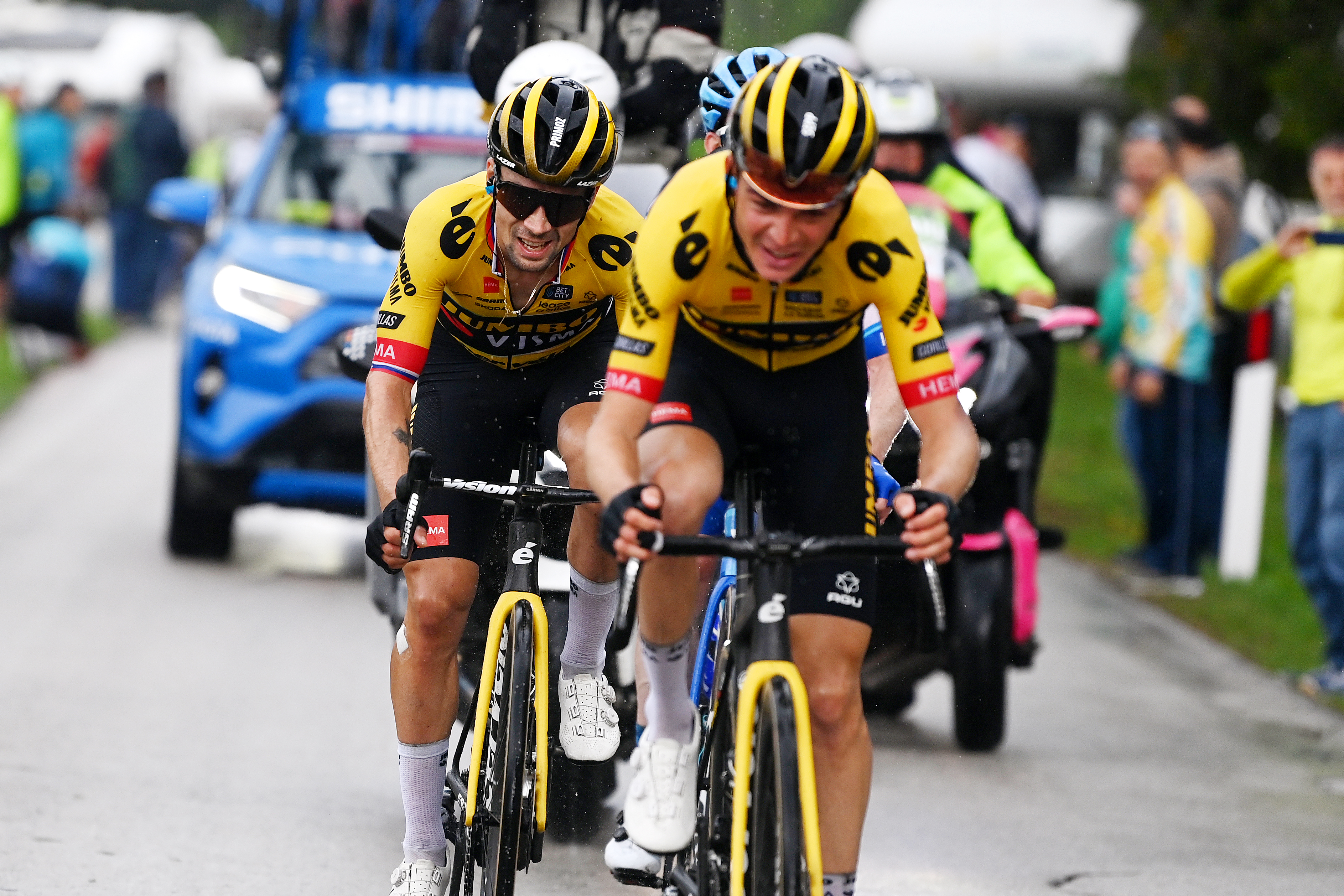
Six kilometres from the summit of Monte Bondone, a bike race broke out. A slow-burning GC battle finally ignited on stage 16, when João Almeida (UAE Team Emirates) played against type and attacked forcefully out of the group of favourites just as the gradient reared into double digits.
Thomas sagely waited for the road to ease slightly before he counter-attacked across a kilometre or so later, but Roglič, surprisingly leaden of pedal stroke, was marked absent. When Thomas linked up with Almeida a couple of hundred metres in front, the Giro looked to be moving inexorably beyond Roglič.
The Slovenian had suffered a deep cut to his hip in the same crash that took out Geoghegan Hart. After days of (relative) détente among the pink jersey contenders at Crans-Montana and Bergamo, this was the first true test of his recovery, and he appeared to be flagging.
Enter Sepp Kuss. He had only been drafted into Jumbo-Visma's Giro plans following Wilco Kelderman's crash at Tirreno-Adriatico, but he didn't miss a beat in Roglič's service across the three weeks. By Rome, the American would have played a key supporting role in five Grand Tour victories.
Kuss was, inevitably, by Roglič's side on Monte Bondone, and his pace-making in the final four kilometres kept his leader's deficit to just 25 seconds by day's end. "Without him, I think the time gap would have been bigger," said Jumbo-Visma directeur sportif Marc Reef afterwards. "But each one of the top three will have a bad moment in the coming days. You just need to make sure at that moment that you keep the time gap as small as possible to your competitors."
Kuss did that and more. His cameo here was surely worth at least 14 seconds to Roglič. He didn't only save the Giro for his leader. In the end, he might even have won it.
Roglič does it the hard way at Monte Lussari
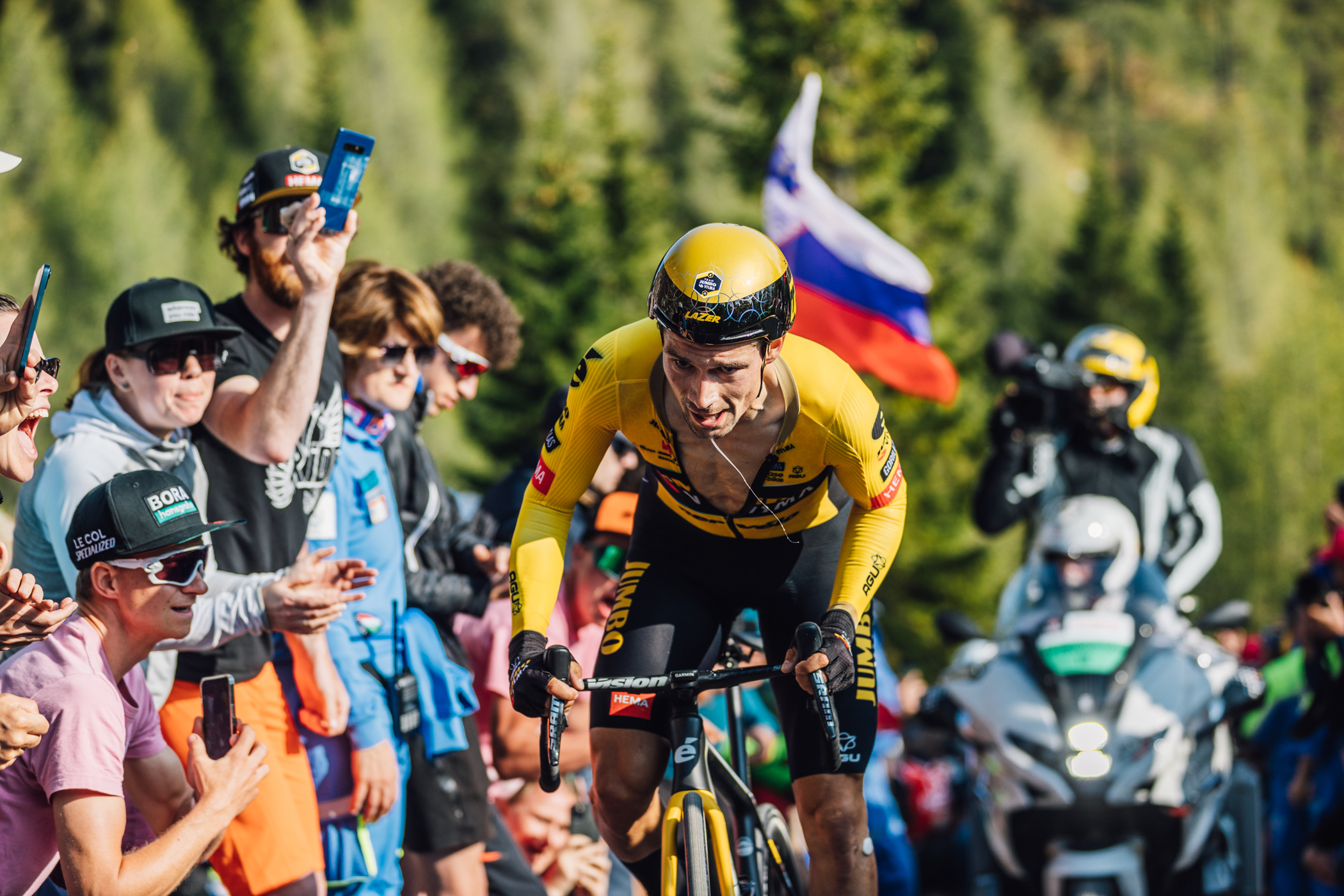
Roglič still had work to do, of course, by the time the Giro pitched up on the Italo-Slovenian border for the decisive stage 20 time trial up Monte Lussari. Although he had recovered sufficiently to attack Thomas at both Val di Zoldo and Tre Cime di Lavaredo, the maglia rosa had yielded precious little.
The three seconds Roglič clawed back in the closing metres at Tre Cime Lavaredo felt largely symbolic. After withstanding the worst of Roglič's onslaught on that vertiginous final 3km, Thomas had a reason for quiet confidence ahead of the Monte Lussari time trial, even with its wicked 22% slopes.
In the final reckoning, however, Roglič simply had too much for the Welshman on the penultimate day of the Giro. Slovenian fans formed a forest of limbs and flags along the narrow coil of switchbacks up the mountainside. Their support was surely worth a handful of seconds to Roglič, but he squandered them when his chain came off with 3km to go.
Somehow, it didn't matter. If anything, it only added to the sense of destiny about the whole occasion. The fan who sprang forth to push Roglič on his way again was an old friend, Mitja Meznar, with whom he had won a junior ski jumping world title in this very corner of the world in 2007.
By the end, the mountain itself seemed to be pushing Roglič to victory. How could he lose? At the summit, he was in pink by 14 seconds. A buttoned-down Giro had somehow contrived to produce the most dramatic finale imaginable. The great race frustrates at times, but it never disappoints.
Roglič, laconic to the last, captured the moment neatly when he took a seat in the press room on Piazza Campidoglio late on Sunday evening, while outside volunteers began to clean up pink and gold confetti that had been littered across Via dei Fori Imperiali.
"I can't really describe in words," Roglič said softly. "They're memories for a lifetime."







